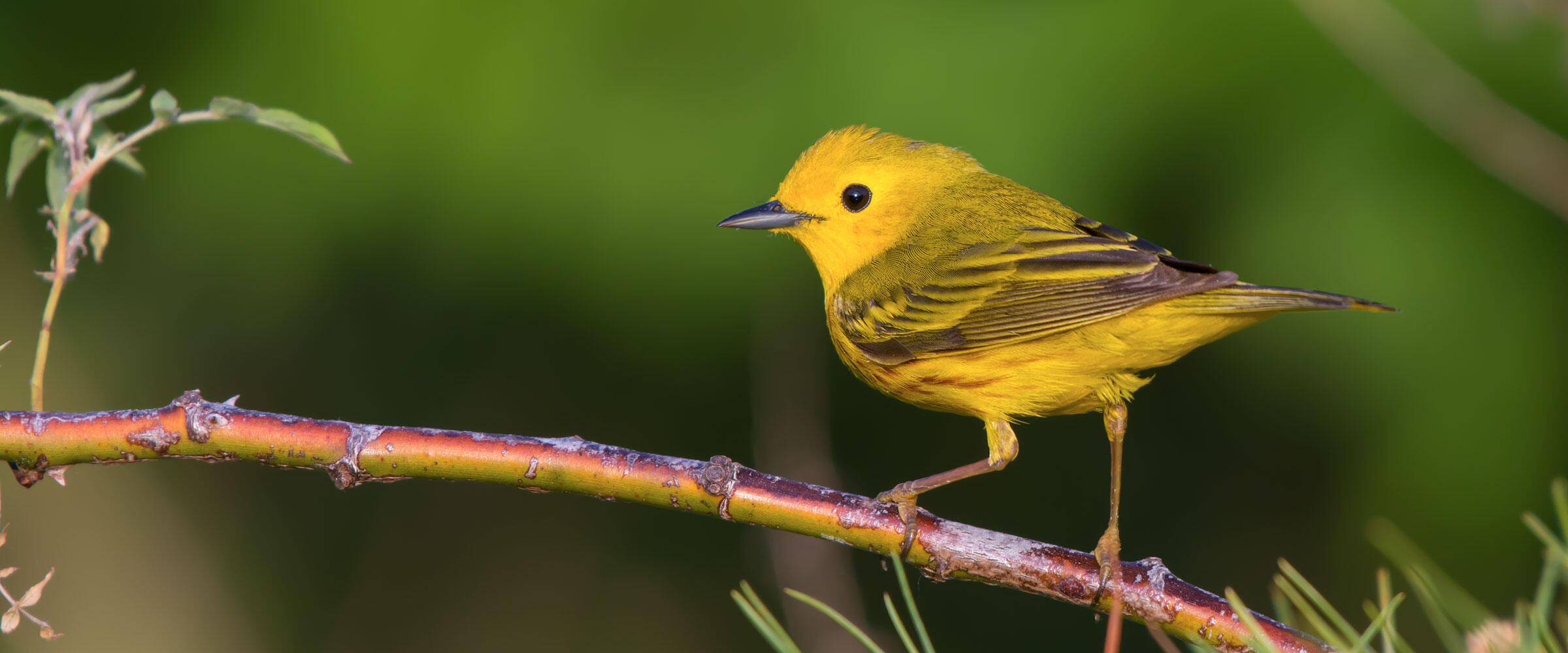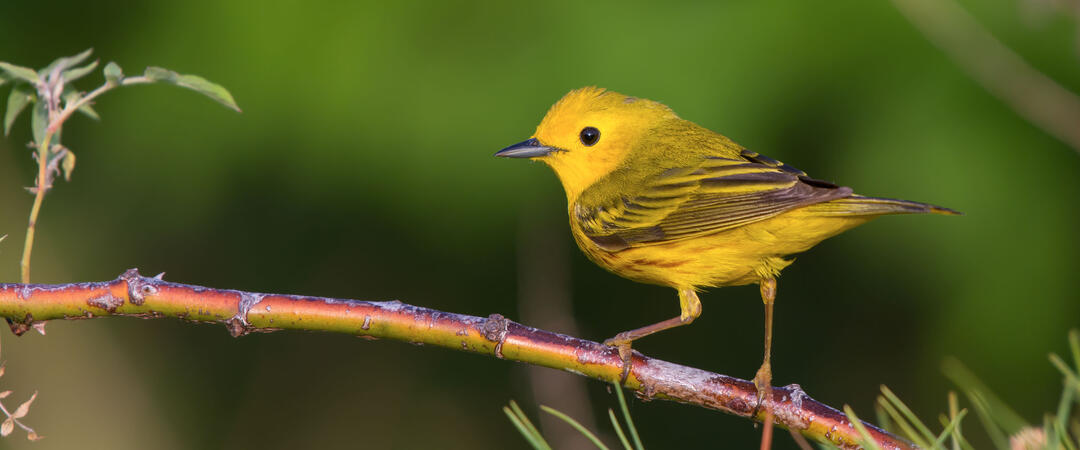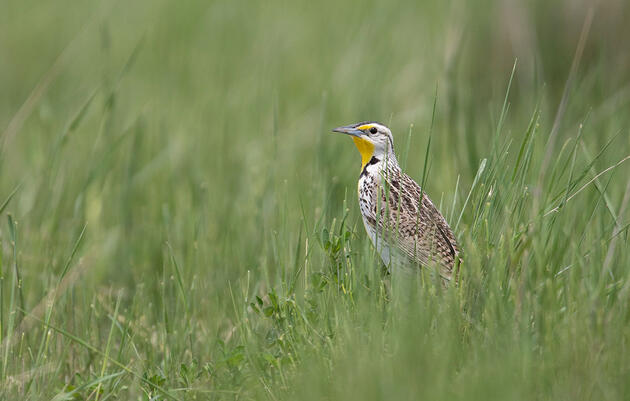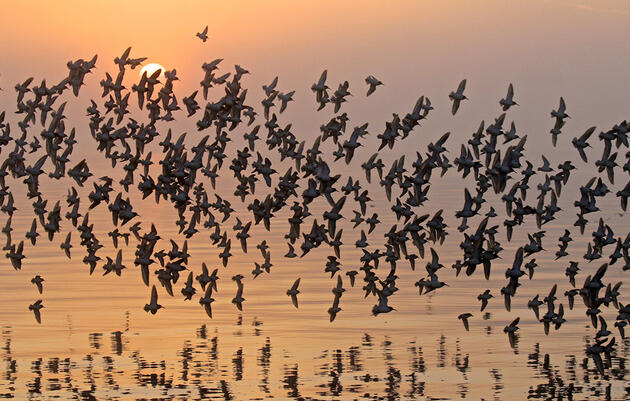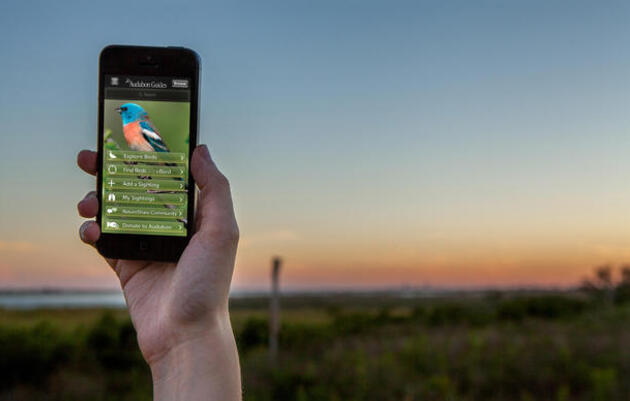As the spring winds usher in a new seasonal order, an exciting wave of migratory birds is washing over Colorado, Wyoming, and Utah, either passing through or returning to our neighborhoods, making their presence known. To make the most of this incredible phenomenon, be sure to investigate those flashes of color or unfamiliar songs in the coming month. Their lively chatter reminds us to freshen up on bird songs and calls and take note of what new neighbors have moved in. The rush of new birds can be both exhilarating and daunting for new birders. Here’s how to identify five common migratory birds that call Colorado, Wyoming, and Utah home for the breeding season. Keep an eye out for these treasures on wings!
Spotted Towhee
The first time you encounter this round-bodied, long-tailed sparrow will likely be through its vocalizations. Whether singing its chup-chup-zheee song from the tops of trees in search of a mate, or through its harsh meewww calls from deep within a shrub, the Spotted Towhee is likely to get your attention by ear. Both mature males and females wear a dark "cloak" that covers their heads, throat, backs, and wings, clear down to their tails. Immatures and females trend browner, while males are near black, with distinctly reddish-brown eyes. White spots adorn their upper wings, hence their name. Their flanks are a rich chestnut brown with a solid white belly between them. If you see one fly away, look for the flash of its white outer tail feathers.
A black hood, chestnut sides, and "chup-chup-zheee" song help identify Spotted Towhees. Video: Evan Barrientos/Audubon Rockies
Spotted Towhees are known for their two-footed backwards hop, a proficient means of turning up seeds, insects, and other forage in the leaf litter under trees. The next time you hear a notable shuffling under a juniper or oak, consider looking a little further! Check out our Habitat Hero resources to learn more about attracting birds like Spotted Towhees to your garden.
Say’s Phoebe
The return of this flycatcher to western rangelands is subtle. Say’s Phoebes are often solitary and quiet. However, their dawn pee-ur songs are some of the first to greet you in the early hours and have a soft, wistful quality. The more sparsely inserted second part of their song appears as a follow-up question to their initial statement; almost to say “beautiful day…don’t you think?”
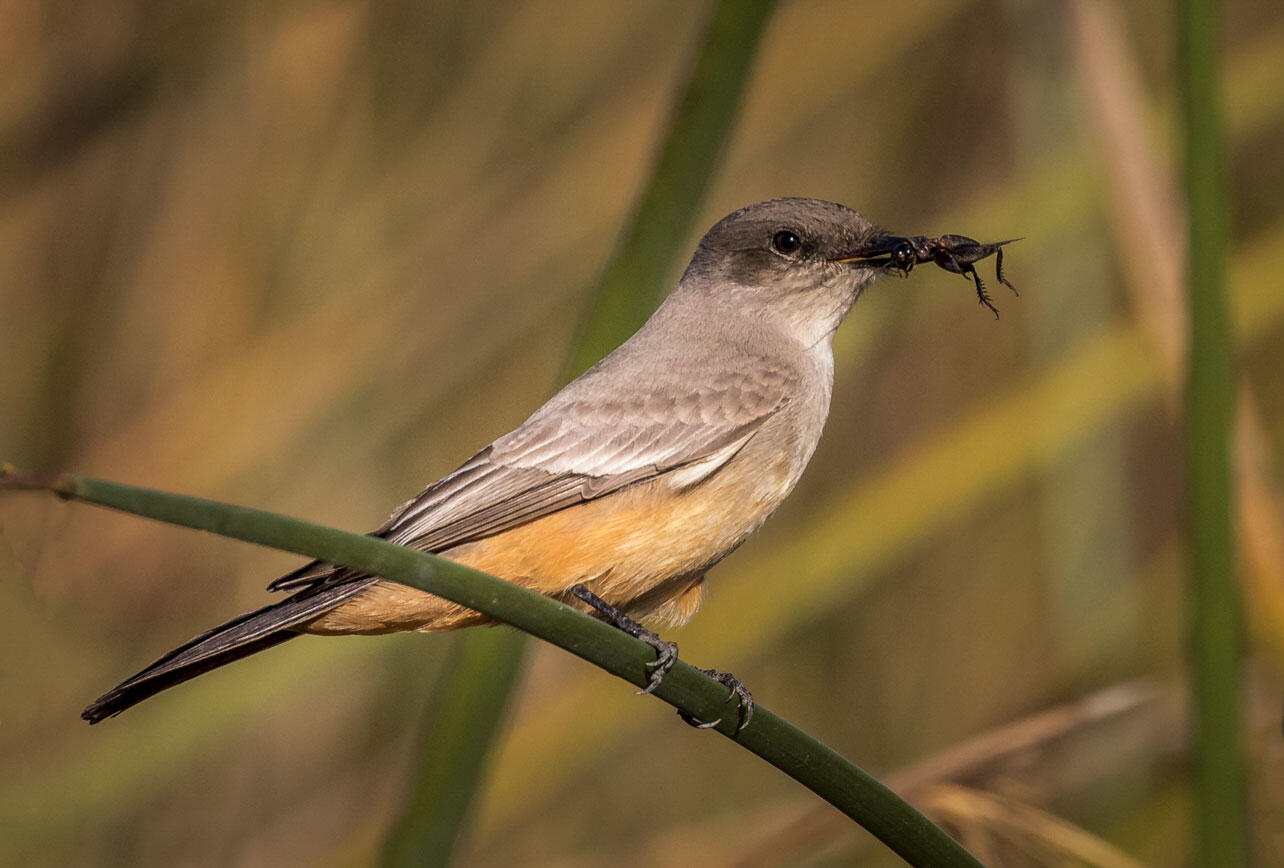
Adults appear brownish-gray above, occasionally elevate their flycatcher crest, and have a long, sooty-black tail with buff underparts. Like other phoebe species, these birds regularly wag their tails up and down when perched. You’ll know them when you witness their hunting strategies. One consists of a short flight from a shrub or fencepost followed by a brief hover five feet above the ground before diving to snatch an insect. The other strategy is when they glean the earliest spring insect hatches over western rivers, usually as temperatures start to rise. Don’t be alarmed if these birds seek out the shelter of your home's eaves for a nesting platform! They make open-cupped nests of plant material and spiderwebs (no mud!) and typically move along after a single brood.
Cinnamon Teal
In terms of spring waterfowl arrival, the Cinnamon Teal is one of the earliest visual treats. While passing through to breeding grounds further north, this species seeks out shallow, marshy stopover sites at ponds, vernal wetlands, and sloughs. This dabbling duck tips over to feed on aquatic vegetation and seeds, as well as insects and zooplankton. Leading up to and during the breeding season, males are a distinctly reddish cinnamon color with red eyes, a sizeable black bill, and darkish tail feathers. Females and non-breeding males appear largely inconspicuous with mottled light-brown plumage. Mature females have a semi-detectable eye-ring. While in flight or when preening, look on the wings for an eye-popping band of solid-colored feathers (called a speculum). The powder-blue color on the upper wing stacked alongside white and green (more notable on males) is sure to impress!
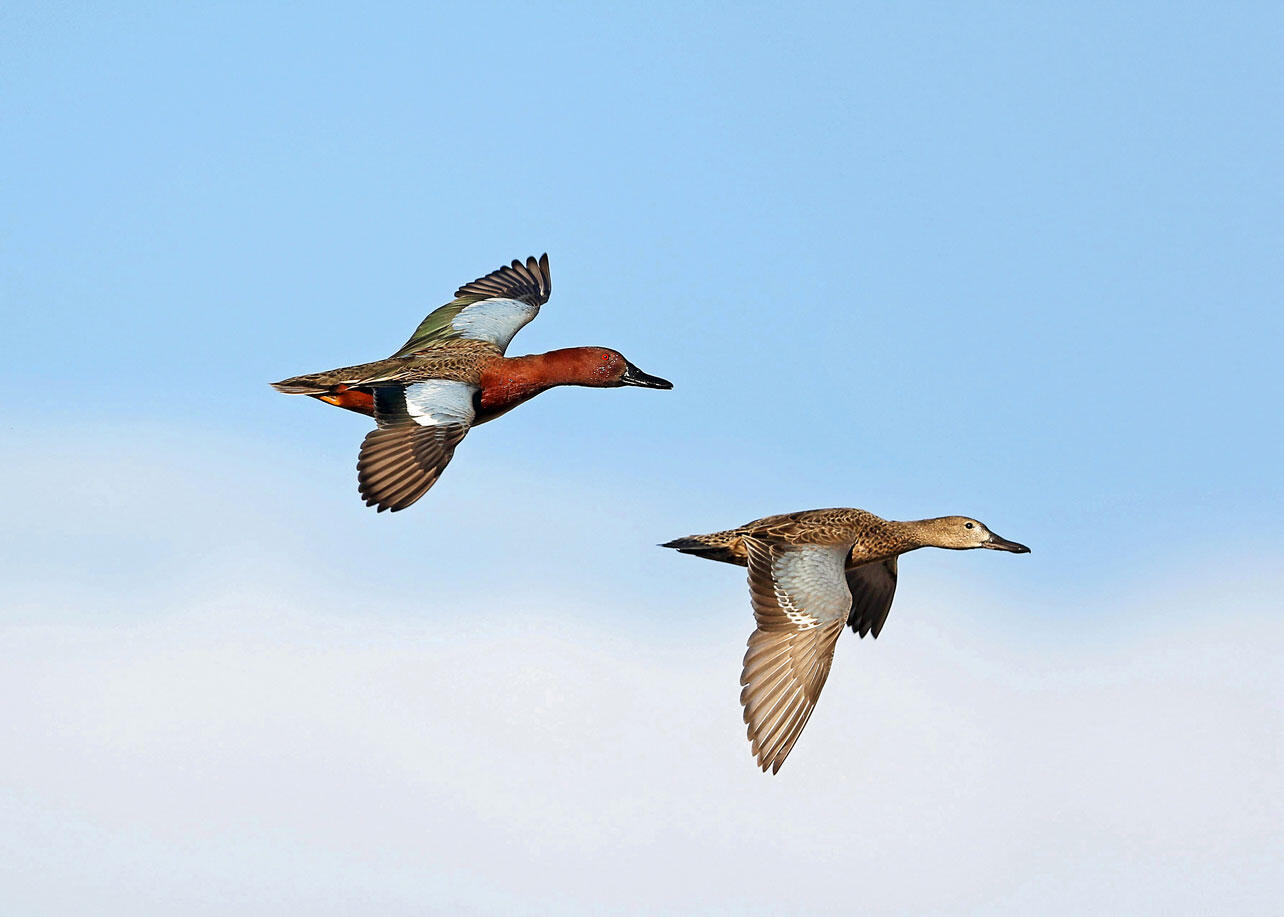
This species is prone to hybridizing with Blue-winged Teal, so study up on field marks for both to discern each species and any crosses. Our Western Rivers Initiative works diligently to protect the freshwater wetlands that Cinnamon Teal and other bird species rely on for healthy nesting habitat.
Western Meadowlark
Is there any sound that more clearly marks the warmer days and months to come than the larger-than-life songs of Western Meadowlarks as they establish and defend breeding grounds? In my opinion, there is no comparison. For those of us who live in either grasslands, shrublands, or oak-savannas, this species is a welcome return. Not only does the bright yellow belly and breast (and showy black necklace) accentuate the morning sun from a fence post or telephone pole, but also the sounds and behavior of this ground-nesting species are quite the marvel. When in flight, observe their point A to point B flight and short-ish tail with white outer feathers.
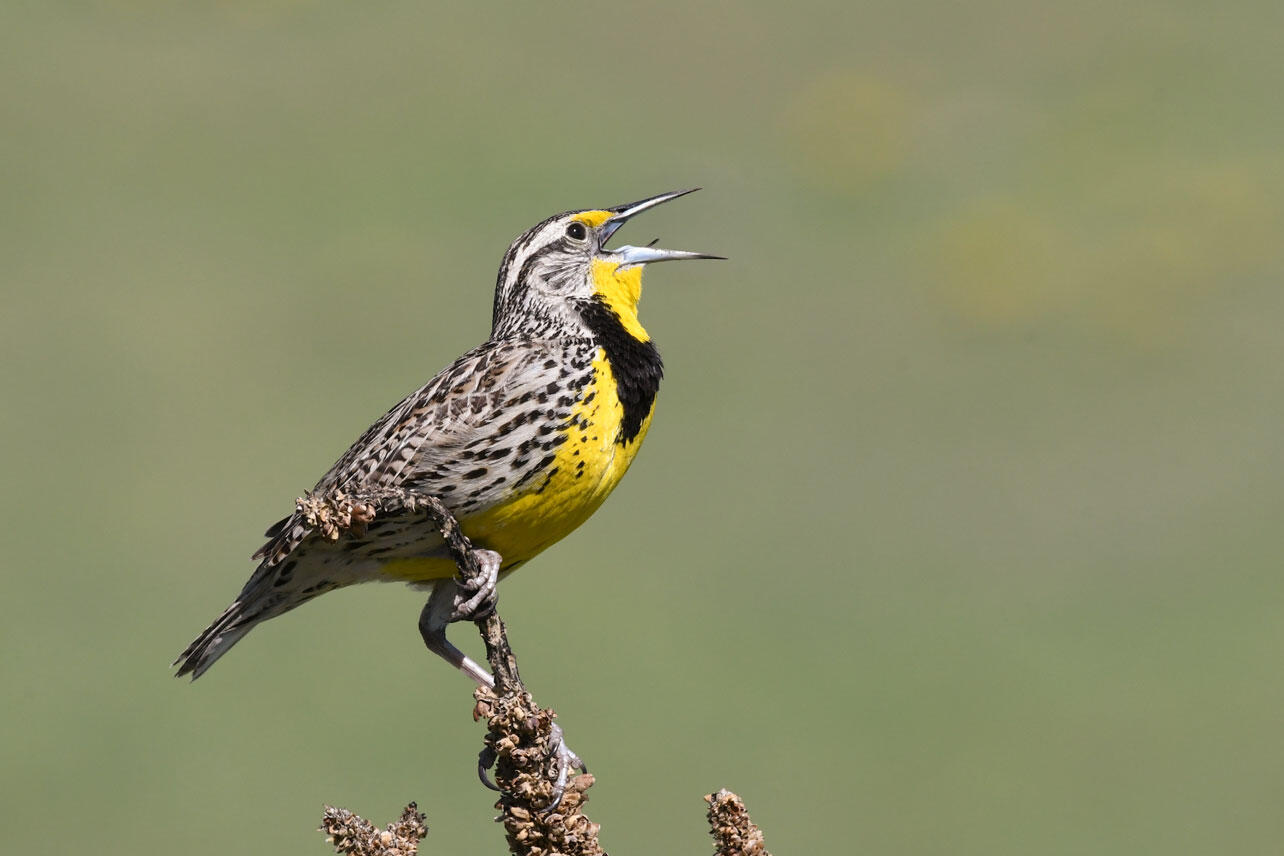
Many people are surprised to learn that this species is a blackbird, not too distantly related to the more aquatic-loving Red-winged Blackbird. If you detect meadowlarks in your backyards or fields, we recommend delaying any mowing until August, as this species may nest in the grasses to yield one to two clutches of young by mid-summer. In the meantime, your efforts will also benefit pollinators!
Yellow Warbler
Let’s not forget the small guys. Warblers are beginning to show up in hedgerows, thickets, and forests. One such species that prefers mature vegetation next to streams and wetlands is the Yellow Warbler. With its almost whispering sweet sweet sweet sweeter-than-sweet song from the higher register, you’ll often need to pause to listen and then prepare to crane your neck to look for these yellow comets in the tree canopy. Shorter exchanges may include buzzing chips or scolding seet calls from deep within willows. Adults are canary yellow underneath with pale greenish feathering on the back similar to a number of other warblers. Males have detectable reddish streaks through the breast. Mature birds have piercing black eyes and short black bills adept for readily plucking insects from foliage.
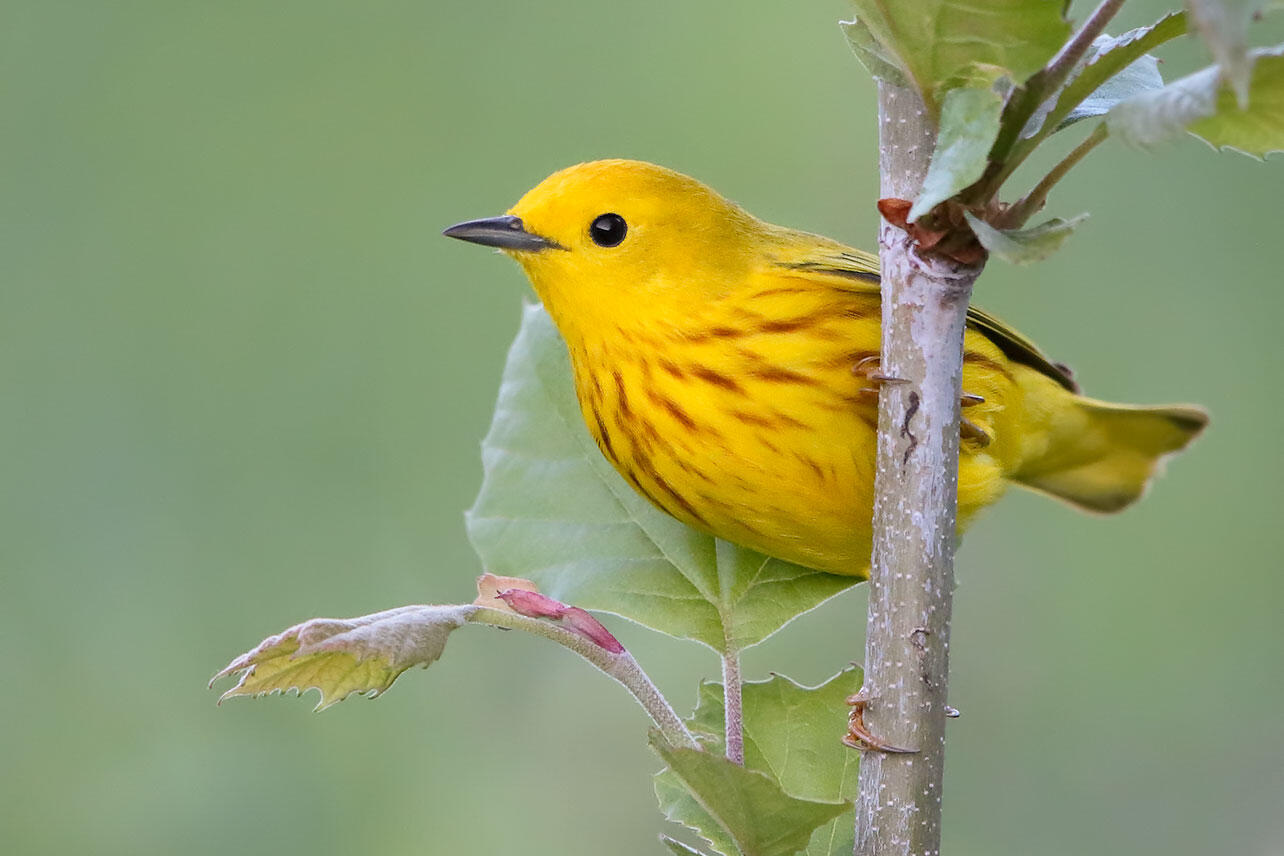
As a small, long-distant migrant, this species needs our help in reducing nighttime light to avoid collisions with manmade structures. To learn more about how you can take action to help yellow warblers and other birds that migrate at night, check out our Lights Out initiative.
Audio © Lang Elliott, Bob McGuire, Kevin Colver, Martyn Stewart, and others.

